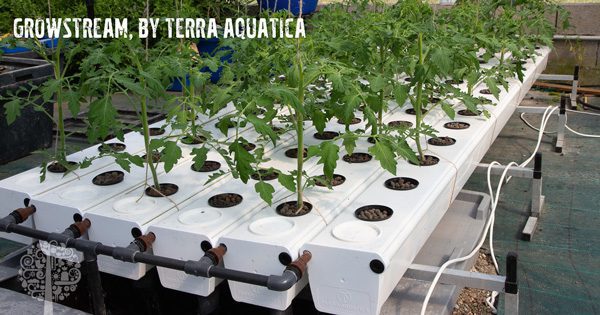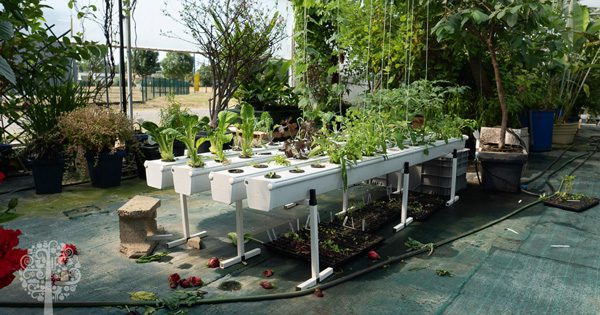William Texier – A Brief History
-
William Texier is a hydroponics innovator and the author of the world-famous book, Hydroponics for Everybody: All About Home Horticulture.
-
Born in Paris, France, he dabbled in hydroponic growing in his 20s, but his experimental work never went far.
-
In 1980, while living in California, he turned his interest into a career and joined General Hydroponics, where he worked until 1994.
-
Texier and GH founder Lawrence (Larry) Brookes developed aero hydroponics together. He credits his mentor, chemist Cal Herrmann, for teaching him everything he knows about manufacturing nutrient solutions.
-
In 1994, Texier moved back to France and created General Hydroponics Europe (GHE) with his wife, Noucetta Kehdi.
-
In 2004, Texier invented and patented “bioponics” (organic hydroponics).
-
In 2013, Texier’s French-language version of Hydroponics for Everybody: All About Home Horticulture was released.
-
In 2014, Scotts Miracle-Gro acquired GH in the United States. GHE is not taken over but is forced to rebrand under the name Terra Aquatica.
Meet William Texier
After working in an industry for 40 years, many would agree that it’s challenging to remain relevant. But somehow, William Texier has done it. After meeting him on Skype for the first time, it’s easy to understand why he is still such a large player in the game. The hydroponics innovator and author of Hydroponics For Everybody: All About Home Horticulture has a passion for the growing method; one that translates through the screen and makes you want to grow something in water immediately. He’s accomplished so much in a career that spans four decades, from developing “bioponics” to helping advance growing technology. And yet, he’s still not done. In his book, Texier says a grow room is a source of pleasure that everyone should experience. And he means it; he will not rest until we all give it a go. He still offers presentations practically begging people to try growing hydroponically.

“You have to beat them until they try,” he says half-jokingly. “You know that when they try it, they will be hooked. Push them to make the first move; really, whatever it takes.”
The Big Boom
These days, he may not have to push very hard. Like many seed companies, grow shops, and garden centers around the world, Terra Aquatica, Texier’s European growing company, saw its business double in a single day as COVID-19 forced people into their homes. The grow-your-own movement is surging in popularity, and with the colder months here, people are looking to bring their pandemic gardens indoors. Enter hydroponics.
“Food today is really bad, most of it,” says Texier of the produce found in supermarkets. “Giving easy access and an easy way of growing, since the beginning, this is our goal. We want to provide tools to people to grow their own food, even in urban settings.”
Texier is particularly proud of a new ebb and flow system Terra Aquatica has released that is powered solely through solar panels. He calls it the perfect eco-friendly growing system for city-dwellers who don’t have a lot of space. The company is in the process of transferring its entire line of growing systems to solar power, including its commercial model, which covers 200 square meters. When it comes to the environment, every little bit helps.
The Planet And Hydroponics
With the United Nations sounding the alarm about the state of the world’s soil, hydroponics is undoubtedly a valid alternative to growing food. It’s especially useful in urban settings where food typically travels thousands of kilometers before making it to people’s plates.

“We are not going to save the planet just with hydroponics, but it is one of the really important tools,” says Texier. “In France, Paris especially, we are ahead [in the game]. They give a lot of roofs for people to grow food, parking lots, and underground parking. For a city, [hydroponics] is part of the solution.”
A Changing Reputation
But Texier says before that happens, hydroponics must be included in a more global vision. While having the reputation of being used strictly for cannabis, the growing method is also excellent for growing tomatoes, peppers, herbs, strawberries, and more. Texier says it doesn’t help that the technique hasn’t been properly used for many years.
“This technology, from the beginning, has been really badly used,” he explains. “In Canada, you have the west of Vancouver and that region covered in greenhouses growing absolutely tasteless tomatoes. This is what hydroponics has been for the last 50 years.”
Since the very beginning, his vision has been to grow for quality over quantity. He and his longtime friend, Larry Brooke, founder of General Hydroponics, have been able to achieve that by taking great care of what they put into their grows. Whether it be food or medicine (or both!), the plants they produce are twice as nutritious as conventionally-grown products or those grown hydroponically with standard inputs.
Bioponics
One of Texier’s most significant achievements has been developing and patenting “bioponics”, which is, essentially, organic hydroponics. His organic solutions are made with the ‘scraps’ from other industries. Think vinasse, which is left over after sugar is removed from a beet, or the part of the aloe vera plant that remains after the gel is extracted. Texier has found a way to make plants our medicine by growing it with the leftovers from other foods; a virtuous cycle that makes hydroponics more appealing to people who are turned off by mineral salts.

Texier acknowledges that many people are intimidated by the technology and nutrient solutions involved in hydroponic growing, not to mention the fact that the plant’s roots are exposed, something entirely out of the ordinary for gardeners accustomed to growing in soil. But if you look at it from Texier’s point of view, how could you grow a plant without seeing the roots?
For those who want to get their feet wet, he recommends starting with coco perlite and a simple ebb and flow system, which offers excellent results for even beginners. Texier, himself, says it’s his favorite system to grow in, although he points out that there is an appropriate model for every plant.
What’s Growing In Texier’s Greenhouse?
Texier’s favorite plant to grow is, and always has been cannabis. He is a huge proponent of medical cannabis and belongs to several advocacy groups throughout Europe. But that doesn’t mean he doesn’t like to grow other things hydroponically.
“There are a million other plants that I really like,” he says. “In our greenhouse in France, [my wife and I] have 230 varieties of plants. I grow mostly medicinals and food crops, and she grows mostly nice flowers. All together, it makes a very nice connection.”
Constantly Evolving
As Texier talks about his career, it is clear that he is one of the pioneers who has helped build the hydroponics industry. He and his close friends and colleagues took an enormous amount of risk, especially in the early days, because they believed in the growing method. Rather than remain stagnant, Texier has worked tirelessly to help the industry evolve, whether it be by introducing organic nutrients or developing new and improved equipment. And it’s all inspired by a deep-rooted passion for plants and growing in water.
“People always tell me that I’m working on new technology,” Texier laughs. “My God; a new technology that comes from the ancient times!”
And although Texier jokingly referred to himself as a dinosaur during our chat, unlike hydroponics, he is far from ancient. He’s just a modern-day guy who wants us all to grow healthy things for our bodies in water. And that’s what keeps him so relevant.